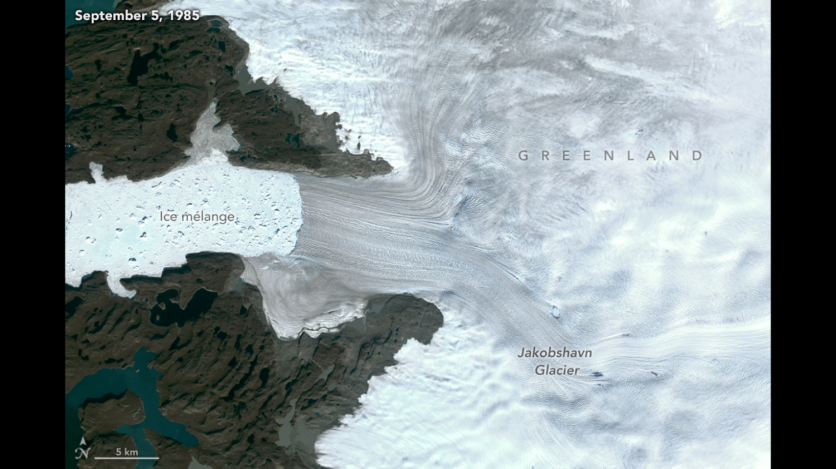NASA scientists from the Jet Propulsion Laboratory in Southern California have revealed that the Greenland Ice Sheet has experienced a more substantial loss of ice mass over the past four decades than previously thought, according to a comprehensive analysis of satellite data.
The study provided a detailed examination of the retreat of glaciers along the entire ice sheet's periphery from 1985 to 2022, utilizing nearly a quarter million pieces of satellite data on glacier positions.

The Retreat of Glaciers
The findings indicated that the majority of glaciers on the landmass had significantly retreated, leading to an increased rate of icebergs falling into the ocean. Although this additional ice loss has indirectly impacted sea levels, its potential ramifications for future ocean circulation are noteworthy.
The analysis disclosed that of the 207 glaciers under study, 179 experienced significant retreat since 1985, while 27 remained stable, and one advanced slightly.
The predominant ice loss occurred beneath sea level in the fjords along Greenland's periphery. While these coastal valleys were formerly filled with ancient glacial ice, the melted ice's limited net impact on sea levels resulted from the influx of seawater into these fjords. Nevertheless, this loss probably hastened the ice movement from elevated areas, thereby increasing sea levels.
"When the ice at the end of a glacier calves and retreats, it's like pulling the plug out of the fjord, which lets ice drain into the ocean faster," said Chad Greene, a glacier scientist at JPL and the study's lead author.
The study highlighted a significant discrepancy in previous assessments, particularly those by the Ice Sheet Mass Balance Inter-comparison Exercise (IMBIE), which estimated the Greenland Ice Sheet's loss at 5,390 billion tons between 1992 and 2020.
The new study, covering the period from 1985 to 2022, suggested a loss of about 1,140 billion tons, 21% more than the IMBIE assessment.
Influx of Fresh Water
While this additional ice loss doesn't directly contribute to rising sea levels, it represents a substantial influx of fresh water into the ocean, according to NASA. Recent studies have indicated that changes in the North Atlantic Ocean's salinity from melting icebergs could weaken the Atlantic Meridional Overturning Circulation, impacting global weather patterns and ecosystems.
The study additionally observed that Greenland's ice coverage exhibited relative stability between 1985 and 2000, after which it underwent a noticeable recession that persists to the current period. Among the glaciers, Zachariae Isstrom in northeast Greenland recorded the most substantial ice loss, followed by Jakobshavn Isbrae on the western coast and Humboldt Gletscher in the northwest.
By employing a comprehensive methodology, the research incorporated diverse datasets and scrutinized glacier positions over an extended period. This approach yielded fresh insights into the dynamics of the ice sheet, presenting a systematic and all-encompassing perspective that enriches our comprehension of the behavior of the Greenland Ice Sheet.
"Previously, we had bits and pieces - lots of local studies. But what this study offers is a systematic and comprehensive view that has led to some pretty significant insights that we didn't have about the ice sheet before," Gardner said in a statement.
The study's findings were published in the journal Nature.

ⓒ 2025 TECHTIMES.com All rights reserved. Do not reproduce without permission.




